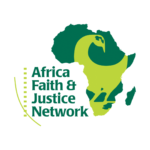In recent years, important strides have been made in awareness and action on the issue of climate change, as the undeniable risks are coming more and more into focus. Yet, while communities around the world are already bearing the burden of a warmer world, international support for adaptation and disaster preparedness as well as efforts for reducing carbon emissions have been insufficient. It is important to recognize that climate change will not impact all nations and individuals in the same way, but will instead be felt disproportionately by the poor, ill, and vulnerable, and by developing countries – those in Africa in particular.
Global climate change means not only average global temperature increases, but global sea level rise, unpredictable weather patterns, and increased frequency and intensity of extreme weather events such as droughts, floods, or hurricanes. These changes have important implications for the world’s poor, especially those in Africa: extreme and unpredictable weather put the most vulnerable at risk – those without the resources to invest in disaster preparedness – and can destroy crucial infrastructure and disrupt fragile food systems, harming productivity of both rural agriculture and coastal fisheries.
Small-scale farming is particularly susceptible to fluctuations in weather and temperature, which translates into vulnerability for the continent’s people: small-scale farming provides most of the food produced in Africa, employs 70 percent of the continent’s working people, and is heavily dependent on rainfall. Already, the Sahel region has experienced a 25 percent decline in rainfall and a greater degree of unpredictability since the 1960s, with more frequent droughts alternating with excessive inundations. Yields from rain-fed agriculture in sub-Saharan Africa could be reduced by as much as 50 percent by 2020.
The human toll from drought and food shortage, in terms of malnutrition, disease susceptibility, loss of life due to hunger, and economic decline, is well-understood and has been felt across the continent too many times already. The Intergovernmental Panel on Climate Change (IPCC) estimates that up to 250 million individuals across Africa will face increasingly severe water shortages by 2050 from climate change alone. Coupled with the expected shortfalls in food production, spread of disease, and malnutrition, many more African communities may be unable bring themselves out of poverty.
This poverty then inhibits a nation or community’s capacity to protect itself or recover from natural disasters, creating a cycle of challenges for the African people. Already, the UN estimates that the annual number of recorded disasters has doubled over the last two decades, with nine out of every 10 disasters now climate-related.
Women – who make up 70 percent of the world’s poor and whose work is more directly linked to natural resources with less access to credit, education, and other resources than their male counterparts – are excepted to bear a disproportionate amount of the burden.
Overall, scientists, non-profits, government agencies, and individuals recognize the human risk climate change poses to African nations. Action Aid calls global warming “one of the greatest obstacles to overcoming poverty and one of the greatest equity challenges of our time.” Jan Egeland, the UN Secretary-General’s Special Adviser on Conflict, who recently traveled through the semi-arid Sahel region of Sub-Saharan Africa to call attention to the communities at risk, called the region “ground-zero” for climate change impact.
Such realities deliver a clear message to the international community that an increase in attention for climate impact prevention and preparedness is a must, beginning with those funds to which first-world nations committed under the United Nations Framework Convention on Climate Change (UNFCC). Yet, not only do these nations need to increase their level of engagement with the issue but to rethink the way they interact with the continent overall, giving priority to global preparedness and reinforcing local coping strategies.
Communities across Africa have developed unique and dynamic means of adapting to or coping with the realities of their environment. In the Gaza province of southern Mozambique, for example, evolving social networks within and between villages has been the key to buffering against the risks from increased weather disasters. As found in a study from Oxford and Sheffield Universities, the area’s highland and lowland farms each thrive at producing a different crop blend and have been facing very different climate-related risks over the past 20 years. Through a developing system of labor-exchange, a widening number of information- and cost-sharing community groups, and a grassroots advocacy effort for improved land-allocation laws, communities and individuals have worked to reduce individual vulnerability to weather-related crop damage. By pooling labor resources, spreading investments, and working together, communities are making the most of their strengths to take advantage of the opportunities for adaptation in their region.
AFJN encourages development agencies to continue telling and listening to these stories, emphasizing reinforcement of community systems and local markets, and prioritizing support for adaptation and preparedness strategies. Furthermore, as this example shows, it is important “not to favor one type of farming over another,” as said in the Up in Smoke report, “as it is the combination that provides resilience to climactic disruptions.”
AFJN remains deeply concerned about the impacts of climate change on the people of Africa. This June, Congress failed to follow through with S. 3036, the Lieberman-Warner Climate Security Act, the first to seriously confront U.S. carbon emission, which would put a mandatory cap on U.S. greenhouse gas pollution and implement an emissions trading system. We encourage you to write to your member of Congress to tell them that the state of Africa’s ecosystems requires a strong commitment from the United States.
By Allison Burket
